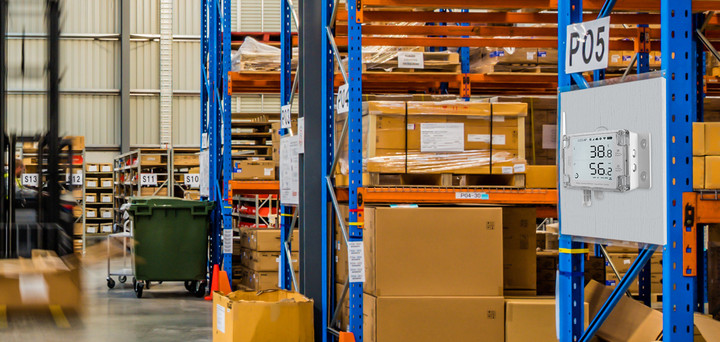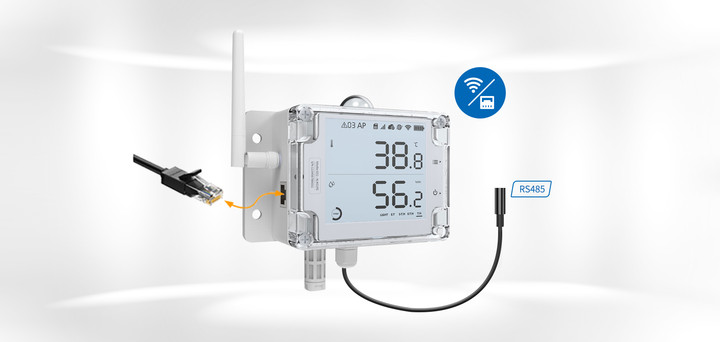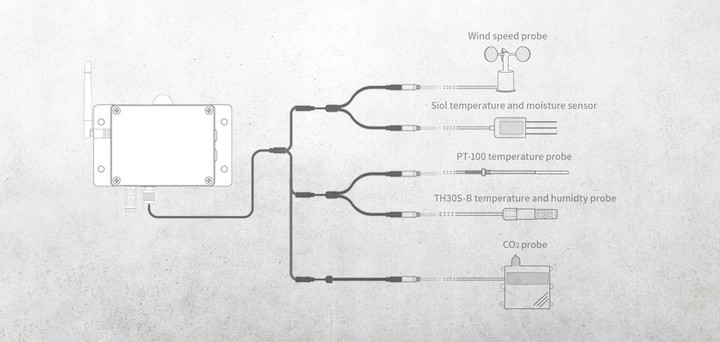-
Account Management
-
Common Questions
-
On-Premises Platform
-
WS1
-
WS1 Pro
-
GS1
-
External Probes
-
App Operation
-
Web Console
-
Downloads
UbiBot ® WS1 User Guide
UbiBot ® WS1 Pro User Guide
UbiBot ® GS1 User Guide
UbiBot ® GS2 User Guide
UbiBot ® MS1 User Guide
UbiBot ® SP1 User Guide
UbiBot ® LD1 User Guide
UbiBot ® AQS1 User Guide
UbiBot ® NR1 User Guide
Accessory Specifications
UbiBot ® Logo Files
Console Operation
APP User Guide
PC Tools
-
Instruction Video
-
-
-
News
-
Changelog
-
Platform API
-
Read First
-
Channel Management
-
Channel Feeds Management
-
Channel Commands
-
API-Key Management
-
Device API
-
Certification and Compliance
The Importance of Industrial Temperature and Humidity Sensors
March 6, 2025
The Importance of Industrial Temperature and Humidity Sensors
Industrial operations require temperature and humidity control, and that’s why we use sensors. Let’s learn about their importance in industrial processes.
The Importance of Industrial Temperature and Humidity Sensors
Industrial temperature and humidity sensors are essential for the activities in which they are utilized to monitor climate factors across various industries. They deliver precise measurements of a space or item’s temperature and humidity conditions.
Variable temperatures and humidity levels can severely impact the employees’ well-being and the total cost of the goods created based on the product or procedure included.
Without temperature and humidity sensors, it would be impossible to correctly produce essential commodities for our civilization, like medicines and medications, putting the public’s safety in danger.
Here’s where our GS1-AETH1RS comes into the picture! With its outstanding specifications, no wonder it’s one of the best industrial temperature and humidity sensors but let’s see what it offers!

Functions of GS1-AETH1RS
The GS1-AETH1RS has provided peace of mind in various contexts, such as server control, agricultural production management, inventory monitoring, and industrial production. These settings include wireless monitoring, clear LCD, industrial-grade sensors, and online access to data.
Now, let’s look at some of the functions that GS1-AETH1RS offers.
#1: Remote Control
The GS1 device has an RJ45 interface built in to provide a more reliable network connection and guarantee ongoing data synchronization. The Ethernet cable gives you another way to access remote wireless 24/7 data monitoring in places lacking Wi-Fi.

#2: Alerts
You have access to several different notifications using GS1-AETH1RS. You can receive notifications when the device loses network connection; the sensor readings go beyond the predetermined range, the battery is low, etc. Email, app notifications, HTTP, API, IFTTT (free), SMS, and voice calls are all alerting options.
#3: Data Export
You can view historical and current data graphs using the UbiBot App and Web Console. You can see even the smallest variations in the curve because of the Y-scaleable axis’s scale. Cloud-based services are offered by GS1-AETH1RS powered by UbiBot, which also allows users to use their storage servers. You can preserve your privacy by transferring the data that your device collects to your private URL using the data forwarding service.
#4: Using Lithium Batteries
The GS1-AETH1RS employs a 2500 mAh lithium battery for the GS1 handset to give corporate customers a better option. When combined with low-power technologies, the device has a longer standby duration for continuous monitoring. A type-C USB cable with a 2A input can quickly and efficiently charge it—additionally, they’re more environmentally friendly since they are rechargeable batteries.
#5: Sharing Devices
There is no restriction on the number of devices you can manage under one account for users who want to centrally manage numerous devices. Additionally, it enables you to create automated links with other smart devices using IFTTT and Alexa.

Can GS1-AETH1RS Be Connected to a Variety of Probes?
Multiple probes employed in various industrial fields are supported by the GS1-AETH1RS series’ built-in RS485 interface (GS1-A excluded). When more than one probe is attached, the big, crisp LCD screen facilitates the presentation of the readings from the external probe in order.

- An industrial-grade probe called a wind speed sensor can accurately measure wind speedin various situations. Both a Micro USB and a 3.5 mm audio plug are included with the probe. The GS1 and SP1 series are compatible with audio plug. Through the Modbus-rs485 interface, the probe’s acquired data is transmitted from the sensor’s internal chip to UbiBot devices. Data access options are immediately on the screen and remotely using the UbiBot App or Web Console
- Effectively tracking soil temperature and moisture is the soil temperature and moisture probe. The probe provides precise measurement thanks to an incorporated industrial-grade chip. The stainless steel probe doesn’t rust when left in the soil for a long time. Data transfer is steady thanks to the robust cable. Based on the frequency domain reflection technique, the soil temperature and moisture probe determine the amount of moisture in the soil. Both a Micro USB and a 3.5 mm audio plug are included with the probe. The audio plug iscompatible with the GS1 and SP1 series.
- The UbiBot CO2 Probeis an industrial-grade instrument with an accuracy of 30 ppm + 3% and can measure CO2 concentration levels in a range of 0–10,000 ppm. It has superior stability and interference-fighting capabilities, robust product protection capabilities, and top-notch lightning protection. This probe applies to the agricultural sector and monitoring carbon dioxide concentration levels in offices, labs, pharmacies, workshops, warehouses, and museums.
- A specially treated platinum wire is wrapped around the inner surface of the PT-100 Industrial-grade Temperature Probe.It can rapidly and accurately reflect the actual temperature. A fiberglass substance that can endure temperatures of up to 200 degrees Celsius protects the lead wire of the probe. The PT-100 uses a chip with great stability to guarantee precision and interference resistance.
- The exterior air temperature and humidity probe, model number TH30S-B,integrates temperature and humidity sensors into a single probe and can simultaneously track two metrics.
Conclusion
For various applications, sensors like the GS1-AETH1RS have been developed that monitor the humidity and temperature of the surroundings. The demand for these sensors arises from the fact that temperature and humidity should be detected and managed in various industries due to their significant impact on various biological, chemical, and physical processes.
Related Articles
- UbiBot Smart Watch HW1: The Ultimate Companion for Health Monitoring and Precision Tracking
- Enhancing Operational Efficiency with the UbiBot NR1: A Versatile IoT Network Relay
- Protect Your Property with the UbiBot LD1 Smart Leak Detector: Advanced Water Damage Prevention for Homes and Businesses
- UbiBot Air Quality Monitor AQS1: A Comprehensive Solution to Monitor and Improve Indoor Air Quality
- The ultimate solution for temperature and humidity monitoring and data analysis
Hot Tags
-
Batteries
change wifi
CO2 monitor
commands
digital humidity sensor
elder years with optimal temprature
environmental conditions in warehouse
food industry
humidity index
hygrometer
indoor light strength
mqtt
RS485 interface
soil moisture
Super SIM
temperature and humidity sensor
temperature sensor
waterproof cover
wireless sensor
WS1


